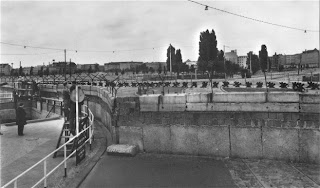I finished this book recently after being riveted to it for a good few days. The book follows Clare Abshire, and her husband Henry DeTamble, who met when Clare was 6 and Henry was 36, andmarried when Clare was 22 and Henry 30.
Henry has a very rare genetic disorder known as Chrono-Displacement that causes him to involuntarily travel through time. He is unable to control when he leaves, where he goes, or how long his trip will last. His destinations are tied to his subconscious, as Henry most often travels to places he has visited or will eventually visit. Very often, Henry is taken back to the moment his mother died in a car accident he survived, and is forced to observe the car crash again and again.
It sounds a bit 'sci-fi' gone wrong, but in fact it is intensely moving. They are both present in different era's each other's lives, and so help each other grow throughout the novel.
A film adaptation of the book staring Eric Bana and Rachel McAdams will be released in December, and I can't wait.


























